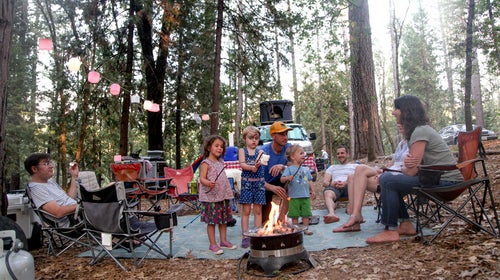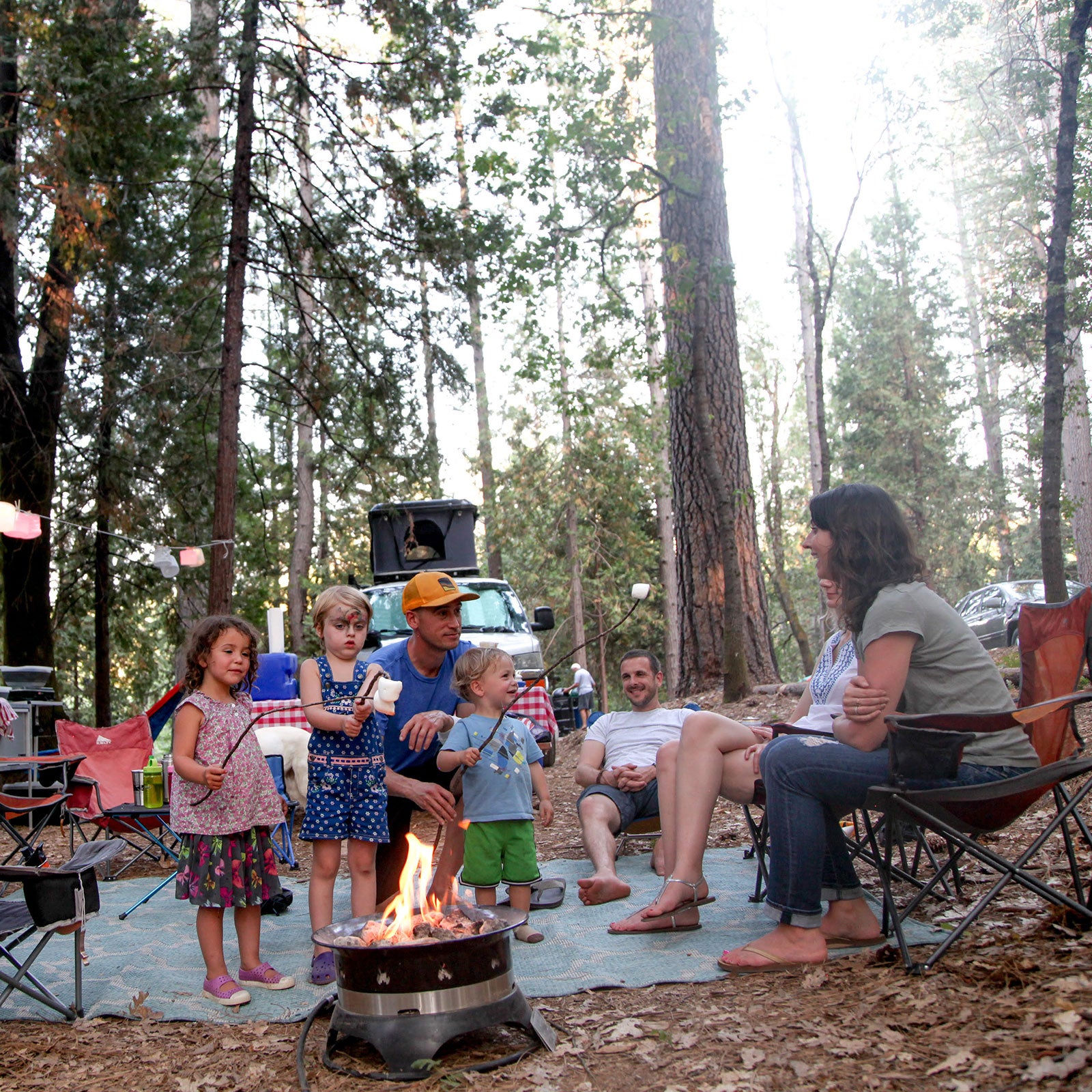Maybe youÔÇÖve owned a sleeping bag and a headlamp for years, but youÔÇÖve never really had the full camp kit with all the necessities you need to sleep self-sufficiently in the woods. With summer rapidly approaching, itÔÇÖs time you got yourself outfitted.
The Gear You Need
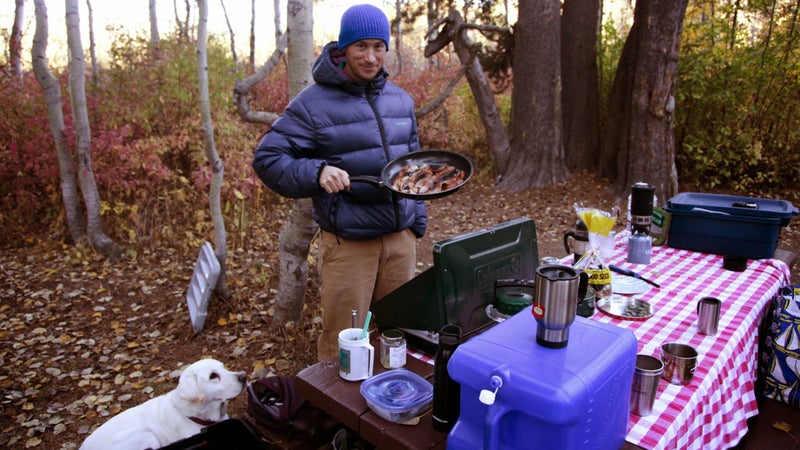
Shelter
Opt for a lightweight┬átwo-person backpacking model if youÔÇÖre planning on hiking to campsites. For this, we like ($229) because itÔÇÖs durable and packs small. If youÔÇÖre car camping, donÔÇÖt skimp on elbow room. A four-person tent like the ($200) will be spacious for you, your SO, and your dog. Tarps can work in a pinch, but full tents are better for privacy at crowded campgrounds and protecting against bugs and rain.
Sleeping Bag and Pad
A 30-degree sleeping bag is a good middle-of-the-road option and should be warm enough to get you through most summer nights. But what you choose for fillÔÇödown or syntheticÔÇödepends on your preferences and where you camp most often. A down-stuffed bag, like the ($224), will be lighter, warmer, and more packable. And the synthetic kindÔÇöthink ($139)ÔÇöcan be less expensive and still insulate when wet. For a sleeping pad, find something that has plenty of loft for comfort if youÔÇÖre car camping, like the self-inflating ($65). A lighter option, such as the┬á ($40), will serve you better when youÔÇÖre backpacking.
Camp Chair and Table
Get a chair thatÔÇÖs comfortable and quick to set up around the fireÔÇöbonus if it has a cup holder and folds down small in the trunk of your car, like ($81). Most campgrounds already have picnic tables, but for dispersed camping┬áyouÔÇÖll want a sturdy compact surface like the ($65) to prep and cook your food.
Kitchen Supplies
On the lighter end of the camp cooking spectrum are backpacking-friendly stovesÔÇösee┬á ($115)ÔÇöthat mount onto small fuel canisters so you can boil water for coffee, oatmeal, and noodles. If youÔÇÖre car camping and not sweating weight, upgrade to something like ($100). ItÔÇÖs bigger but better for cooking with multiple pans┬áand for accommodating larger groups of people. In addition to a┬ápot and pan, youÔÇÖll also need a simple set of nonbreakable dishware, including plates, bowls, mugs, and silverware. We like ($110), because it has most everything and is still fairly portable, and the brandÔÇÖs full ($4). Lastly, youÔÇÖll want an ice chest like the ($120) for keeping perishable foods on ice, a separate bin for storing non-perishables and things like tin foil ( is hardy and costs only $30), and a big, easy-pour jug like ($19) for drinking water.
Lighting
A standing or hanging lantern like ($40) can be a nice touch for your picnic table or tent once the sun goes down. Or keep it simple and get a headlamp with good battery life, like ($60) that you can use for midnight bathroom breaks.
The Gear You DonÔÇÖt Need but Is Nice to Have
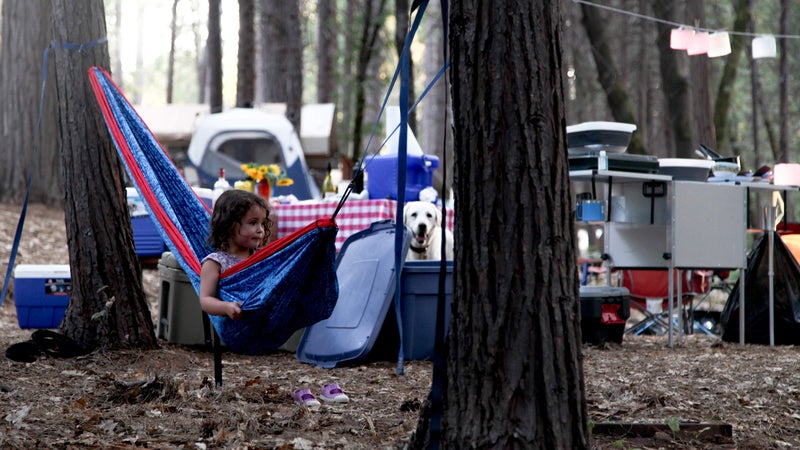
When youÔÇÖre car camping, as long as everything fits in the trunk of your vehicle, you can bring some additional supplies thatÔÇÖll help you settle into home away from home. Our favorite extras include ($30), the┬á from Rumpl ($59), the┬á ($69) to string between two trees, a tablecloth to throw over the picnic table ( from Ikea will do), the┬á ($12) for doing dishes, and the┬á ($100). None of that is necessary, of course, but they make the difference between setting up a camp youÔÇÖll want to hang out in for the weekend versus a quick┬áovernight place to crash.
What You Can Score for Cheap
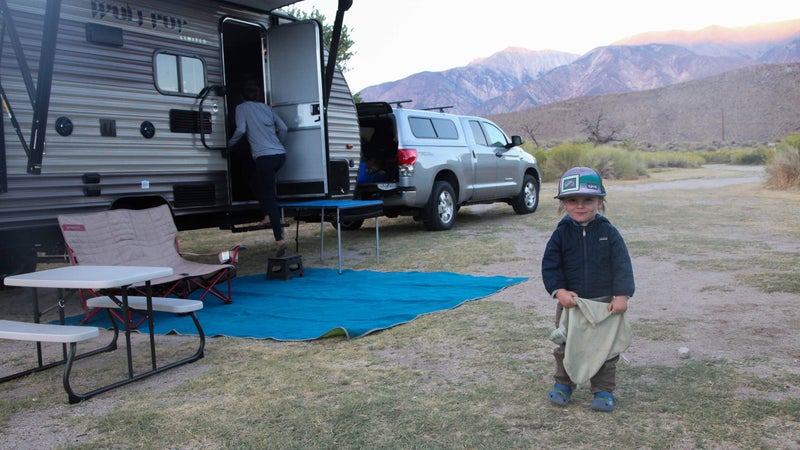
Certain things arenÔÇÖt worth splurging on. Camp kitchens have gotten high tech and intricate these daysÔÇöeverything from to to . Those are great, but that simple Eureka two-burner we mentioned┬áwill last decades and cook like a champ. Same goes for dishware: be realistic about whether you actually need pricey plates and bowls that fold up like origami. Often┬áplastic ones from Target will do just fine and last years.
Other Things to Know
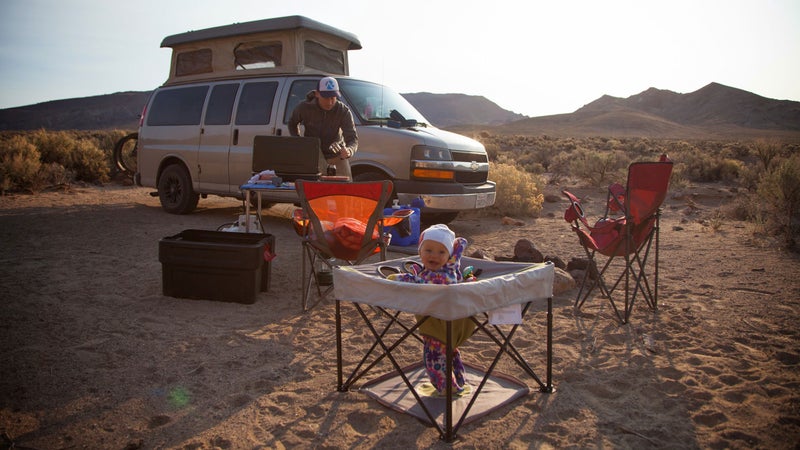
Booking a Site
Once youÔÇÖve got all your essentials (and whatever extras you want), itÔÇÖs time to camp. First, find a siteÔÇöfortunately┬áit┬ájust got┬áa lot easier to book online. YouÔÇÖll want to be aware of a handful of key things when securing the right site, like whether it has good access to water, ample flat ground to pitch a tent, and plenty of privacy. Many popular campsites require booking way ahead of time, while other lesser known spots are first-come, first-served and sometimes you can get them entirely to yourself.
Cooking Your Meals
Do some meal planning ahead of time, stocking up on the groceries you need in case thereÔÇÖs no store between you and camp. Start with a killer camp breakfast, pack simple lunch supplies you can take on a hike or prepare on the tailgate, and consider elevating your dinner game with dishes like Dutch oven enchiladas or cheesy asparagus orzo.
Setting Up Camp
Pitching a tent isnÔÇÖt always as easy as it looks, so check the setup directions if they come included. If youÔÇÖve got kids with you, extras like yard games and swinging hammocks will make things even more fun. Build the perfect campfire and, if you choose, you can cook dinner over an open flame. SÔÇÖmores for dessert are the standard, but there are plenty of other sweet options out there.
Packing Up
When itÔÇÖs time to pack up, make sure you leave no trace so it looks like you were never there.
